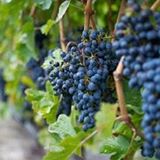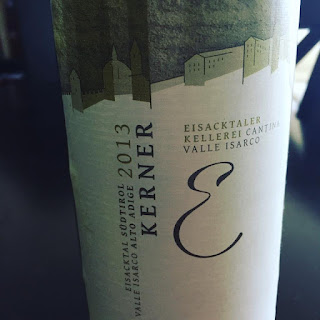At Maxwell Park, the theme changes every month and so does the wine list. When I first heard about it opening, and that the theme of their first month was "ABPG, Anything But Pinot Grigio," I knew it would become another home away from home. A little background: I've had a few decent Pinot Grigio's but I am staunchly against the idea that most restaurants and importers think that PG its the only white Italian varietal Americans want to drink. If we only had access to more varietals like Vermentino, Arneis, Grillo and Cortese (the grape in Gavi di Gavi), I think wine drinking Americans would become just as obsessed as I am!
The August theme at Maxwell Park, "How Big is My Bubble?" highlights bubbly, my favorite type of wine, and anything that isn't Champagne, Cava or Prosecco. It was phenomenal. In fact, it kind of blew my mind (or bubble)!
The Founder and sommelier Brent Kroll came to our table to take our order and patiently answered all of our (ok- mainly my) questions and provided excellent recommendations.
I think my absolute favorite was the first bottle we had, a Pet Nat wine*, the 2016 Channing Daughters, “sylvanus,” from Long Island.
Pet Nat, which stands for Petillant Naturel, is a bubbly made with an ancient ancestral method, similar to Champagne, but a little different too.
With this wine, the grapes are hand harvested and whole cluster pressed, fermented in stainless steel tanks and then coarsely filtered and bottled, with no sulfur dioxide or stabilization in sparkling wine bottles and sealed with a crown cap, and fermentation is continued in the bottle.
There is some sediment in the bottle from yeast lees because it isn't disgorged like the traditional Champagne method, which gives it its cloudiness!
I was also totally tickled to see a bubbly version of a fantastic Txakolina Rose I had in New Orleans on the list, which I ordered a 2.5 oz pour of- it was excellent. I love that they have this option in addition to the option of a bottle or glass.
They also had excellent food to snack on. We tried the Burrata and the salmon crudo.
Some of the other wines we ordered, all his recommendations and all fantastic:
Bottom line, I would highly, highly recommend this place- its my new favorite DC wine bar, and I absolutely can't wait to go back!
More on Pet Nat wines in a future post.
Cheers!
































